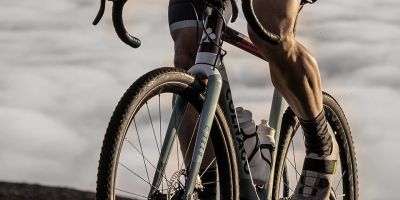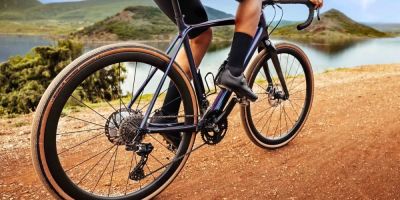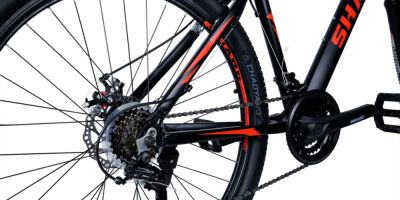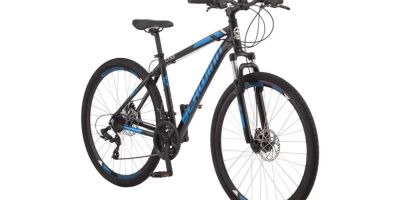Best Bikes for Challenging Uphill Terrain: Top Mountain Bikes for Steep Climbs
As an avid cyclist, I’ve had my fair share of experiences battling steep hills and challenging uphill terrain. Whether you’re riding through rugged trails or facing the uphill grind on your favorite local mountain, having the right bike can make all the difference. I remember my first experience riding up a tough hill during a mountain biking trip—I had the wrong bike for the job, and let’s just say it wasn’t a smooth ride. Since then, I’ve spent a lot of time researching and testing bikes that are built specifically for uphill terrain, and I’ve learned a lot about what makes a bike perfect for those steep climbs.
In this article, I’ll share some of the best bikes for challenging uphill terrain, based on my personal experiences and research. Whether you’re a seasoned cyclist looking to upgrade your gear or a beginner who wants to start tackling tougher hills, these bikes are designed to give you the power and control needed to conquer steep climbs with ease.

Mike's Bikes of Berkeley
1824 University Ave, Berkeley, CA 94703, USA
1. What Makes a Bike Ideal for Uphill Terrain?
When I first started tackling steeper hills, I quickly realized that not all bikes are created equal when it comes to uphill performance. There are several factors that contribute to a bike’s ability to handle challenging uphill terrain. I’ll break down the key features to consider when choosing the right bike for uphill climbs:

Mike's Bikes of Berkeley
1824 University Ave, Berkeley, CA 94703, USA
1.1 Gear System
The gear system is crucial when it comes to uphill cycling. A bike with a wide gear range allows you to shift easily into lower gears, making it easier to pedal up steep inclines without burning out. When I upgraded to a mountain bike with a 1x drivetrain (single front chainring), I noticed a significant difference in my ability to tackle steep terrain. A 1x system reduces weight and simplifies shifting, which is helpful when you’re focused on making your way up a difficult climb.
1.2 Frame and Material
The frame material plays a big role in the weight and overall strength of a bike. Lighter bikes are easier to ride uphill, but you don’t want a bike that’s so lightweight that it compromises durability. For challenging terrains, I recommend bikes with aluminum or carbon fiber frames. These materials strike a good balance between strength and weight. Personally, I found that an aluminum frame provided a good balance between durability and weight for climbing, while carbon fiber frames are lighter but typically come with a higher price tag.
1.3 Suspension
Suspension is another important factor when dealing with rough, uneven terrain. Full suspension bikes, which have both front and rear suspension, are great for rough trails where you might encounter rocks or roots. However, for primarily uphill terrain, I found that a hardtail mountain bike (with front suspension only) worked best for me. It’s lighter, and the rear doesn’t absorb unnecessary energy while climbing, which makes it easier to maintain power.
1.4 Tires and Grip
When riding uphill on challenging terrain, tire grip is critical. I’ve learned that wider tires with a more aggressive tread pattern provide better traction, especially on loose gravel or dirt. It’s important to choose tires that can handle the type of terrain you’ll be riding on, whether that’s mud, rocks, or dry trails. I personally like using tires that are about 2.3” to 2.5” wide for maximum grip on difficult terrain, especially when going uphill.
2. Best Bikes for Uphill Terrain: My Top Picks
After spending plenty of time researching and testing bikes for challenging uphill terrain, I’ve compiled a list of some of the best bikes for tackling steep climbs. These bikes offer the right combination of power, control, and comfort, making them ideal for anyone looking to conquer hills:
2.1 Trek Marlin 7
The Trek Marlin 7 is a fantastic choice for anyone looking for a budget-friendly mountain bike that can handle uphill terrain. With its lightweight aluminum frame, front suspension, and 1x drivetrain, it provides the perfect setup for climbing steep hills with ease. I’ve personally taken this bike on several uphill trails, and its responsive shifting and durable construction made it feel stable and reliable, even on the toughest inclines. Plus, its wide tires provide plenty of traction on rocky or uneven surfaces.
2.2 Specialized Rockhopper
Specialized is known for making high-quality bikes, and the Rockhopper is no exception. With its efficient 2x drivetrain, 100mm front suspension, and wide tires, this bike is designed for uphill climbs and rough terrains. I had the chance to test this bike on both uphill and downhill sections, and I was impressed by how smoothly it handled. It’s an excellent all-around bike for anyone who wants to take on challenging terrains without compromising on comfort.
2.3 Cannondale Trail 5
If you’re looking for a more premium option, the Cannondale Trail 5 is a top-tier choice. This bike features a lightweight aluminum frame, front suspension, and a 1x drivetrain that’s perfect for uphill climbs. The geometry of the bike is designed to optimize power transfer, so you can maintain momentum even when tackling steep slopes. I’ve ridden this bike on a variety of terrains, and it always performs well, offering a smooth and stable ride even on the toughest uphill challenges.
2.4 Giant Talon 29
The Giant Talon 29 is an excellent option for those looking for a larger tire setup and excellent climbing capabilities. With 29” wheels and a lightweight frame, the Talon 29 can handle uphill terrain with ease while maintaining stability on rocky trails. Its 1x drivetrain and responsive braking system make it ideal for those looking to take on steep climbs without sacrificing performance. I personally love how the larger tires give me extra traction when going uphill, making every ride smoother.
2.5 Santa Cruz Chameleon
If you’re looking for a bike that’s versatile and built for serious uphill riding, the Santa Cruz Chameleon is an excellent choice. This bike is known for its robust frame, smooth suspension, and wide gear range, making it ideal for tackling steep climbs and rugged trails. The Chameleon’s frame geometry is designed to maintain power transfer and provide a comfortable ride, even during long, grueling climbs. This bike has impressed me with its durability and ability to handle everything from quick climbs to long uphill challenges.
3. Additional Tips for Uphill Riding
Aside from choosing the right bike, there are several other things I’ve learned over the years that can make a huge difference in your uphill cycling experience:
3.1 Maintain Proper Technique
When riding uphill, it’s not just about the bike—it’s also about your technique. I’ve found that leaning forward slightly and keeping my body weight balanced helps keep my momentum going. Standing up on the pedals can also help me power through steeper sections, while keeping my cadence steady can prevent me from burning out too quickly.
3.2 Pace Yourself
One of the most important things I’ve learned when riding uphill is pacing myself. It’s easy to get caught up in the excitement of a challenging climb, but taking things slow and steady helps conserve energy and makes it easier to reach the top. I always remind myself to take breaks and hydrate when needed.
3.3 Keep Your Bike Maintained
Finally, keeping your bike well-maintained is essential for tackling tough terrain. Regularly checking tire pressure, cleaning your chain, and ensuring your gears are functioning smoothly will help make every uphill ride more efficient and enjoyable. A well-maintained bike is essential for navigating steep climbs without unnecessary delays or issues.










